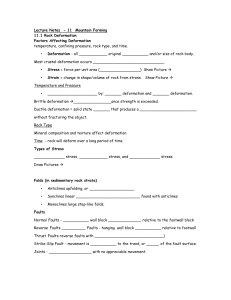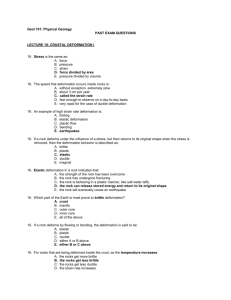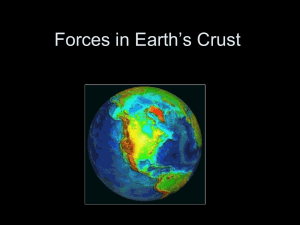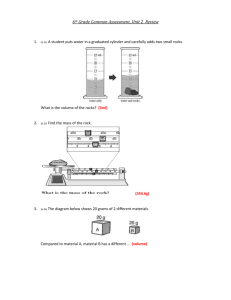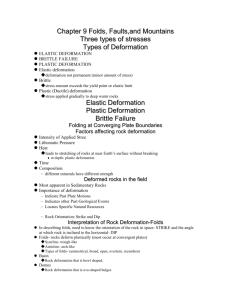11.1_fullnotes
advertisement
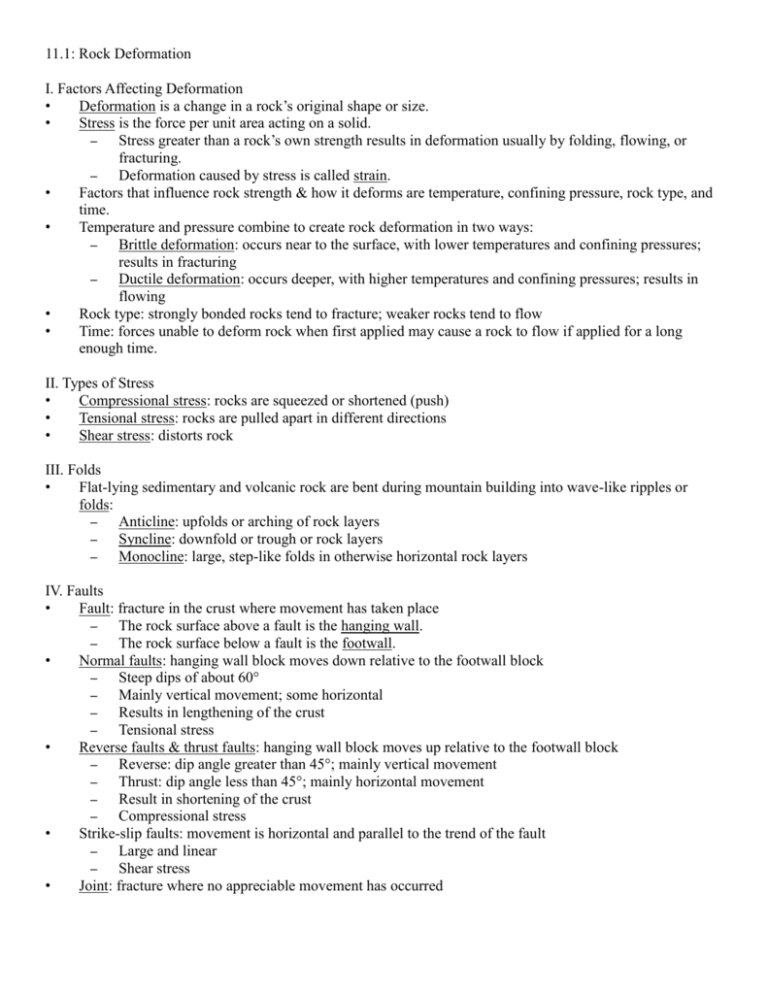
11.1: Rock Deformation I. Factors Affecting Deformation • Deformation is a change in a rock’s original shape or size. • Stress is the force per unit area acting on a solid. – Stress greater than a rock’s own strength results in deformation usually by folding, flowing, or fracturing. – Deformation caused by stress is called strain. • Factors that influence rock strength & how it deforms are temperature, confining pressure, rock type, and time. • Temperature and pressure combine to create rock deformation in two ways: – Brittle deformation: occurs near to the surface, with lower temperatures and confining pressures; results in fracturing – Ductile deformation: occurs deeper, with higher temperatures and confining pressures; results in flowing • Rock type: strongly bonded rocks tend to fracture; weaker rocks tend to flow • Time: forces unable to deform rock when first applied may cause a rock to flow if applied for a long enough time. II. Types of Stress • Compressional stress: rocks are squeezed or shortened (push) • Tensional stress: rocks are pulled apart in different directions • Shear stress: distorts rock III. Folds • Flat-lying sedimentary and volcanic rock are bent during mountain building into wave-like ripples or folds: – Anticline: upfolds or arching of rock layers – Syncline: downfold or trough or rock layers – Monocline: large, step-like folds in otherwise horizontal rock layers IV. Faults • Fault: fracture in the crust where movement has taken place – The rock surface above a fault is the hanging wall. – The rock surface below a fault is the footwall. • Normal faults: hanging wall block moves down relative to the footwall block – Steep dips of about 60° – Mainly vertical movement; some horizontal – Results in lengthening of the crust – Tensional stress • Reverse faults & thrust faults: hanging wall block moves up relative to the footwall block – Reverse: dip angle greater than 45°; mainly vertical movement – Thrust: dip angle less than 45°; mainly horizontal movement – Result in shortening of the crust – Compressional stress • Strike-slip faults: movement is horizontal and parallel to the trend of the fault – Large and linear – Shear stress • Joint: fracture where no appreciable movement has occurred



